This post may contain affiliate links. Please read my privacy policy.
Miso Soup is a Japanese soup made with miso paste, tofu, seaweed and dashi broth. Easy and authentic homemade miso soup recipe that takes 10 mins to make.
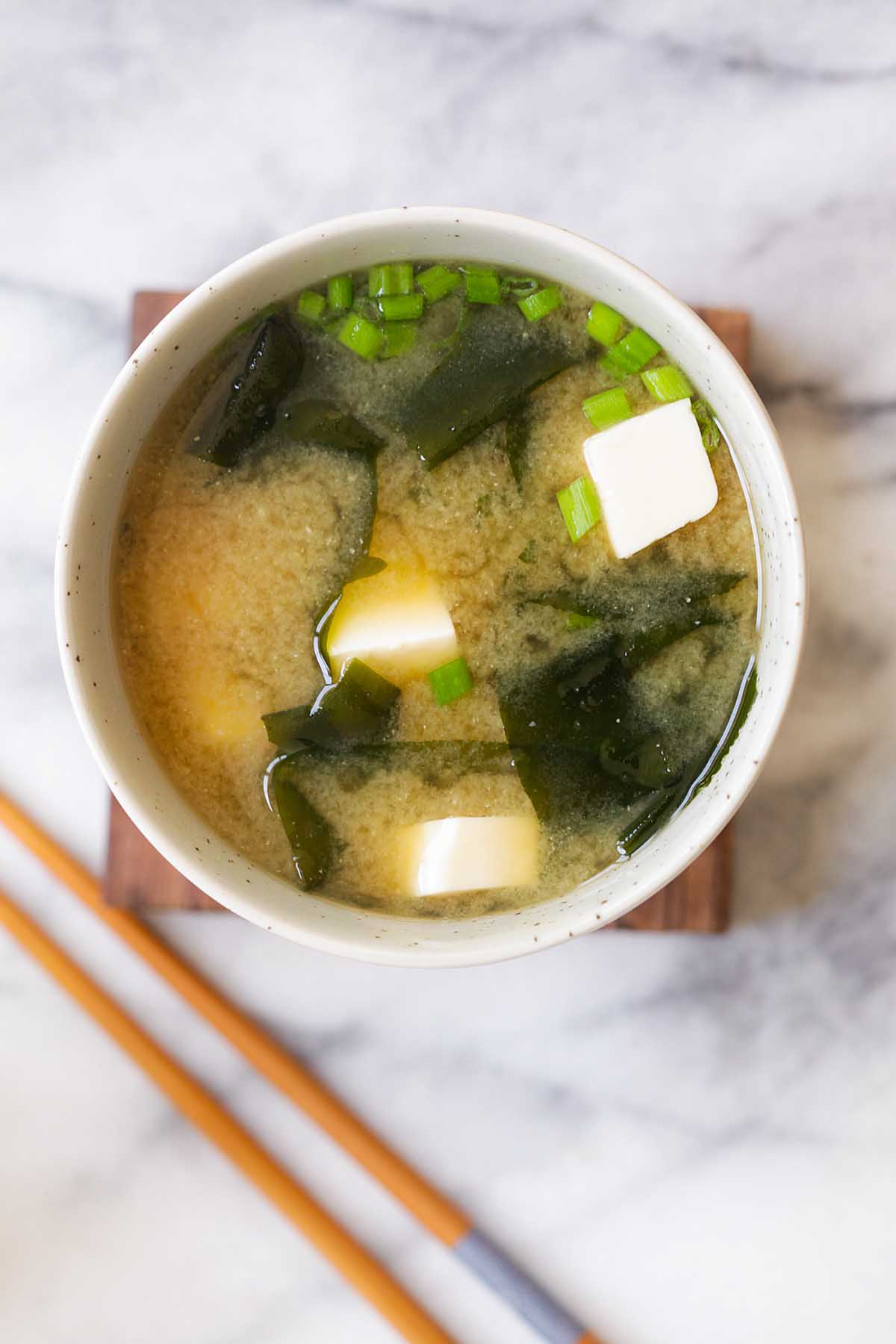
What Is Miso Soup Made Of
Miso Soup is a very healthy Japanese recipe because it’s made of miso paste, which is fermented soybean paste.
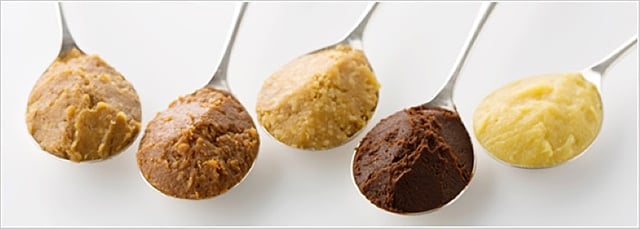
There are three main types of miso: yellow, red and white. Miso is good for you because the fermented soybeans help digestion and provide good probiotics.
Personally, I like white miso (far right on the picture above) as it’s mildly salty with a tint of sweetness. You may get miso and all the ingredients you need for this Miso Soup recipe at a Japanese or Asian food store.
To learn more about miso nutrition and benefits, check out this article at Japan Info.
What Is In Miso Soup
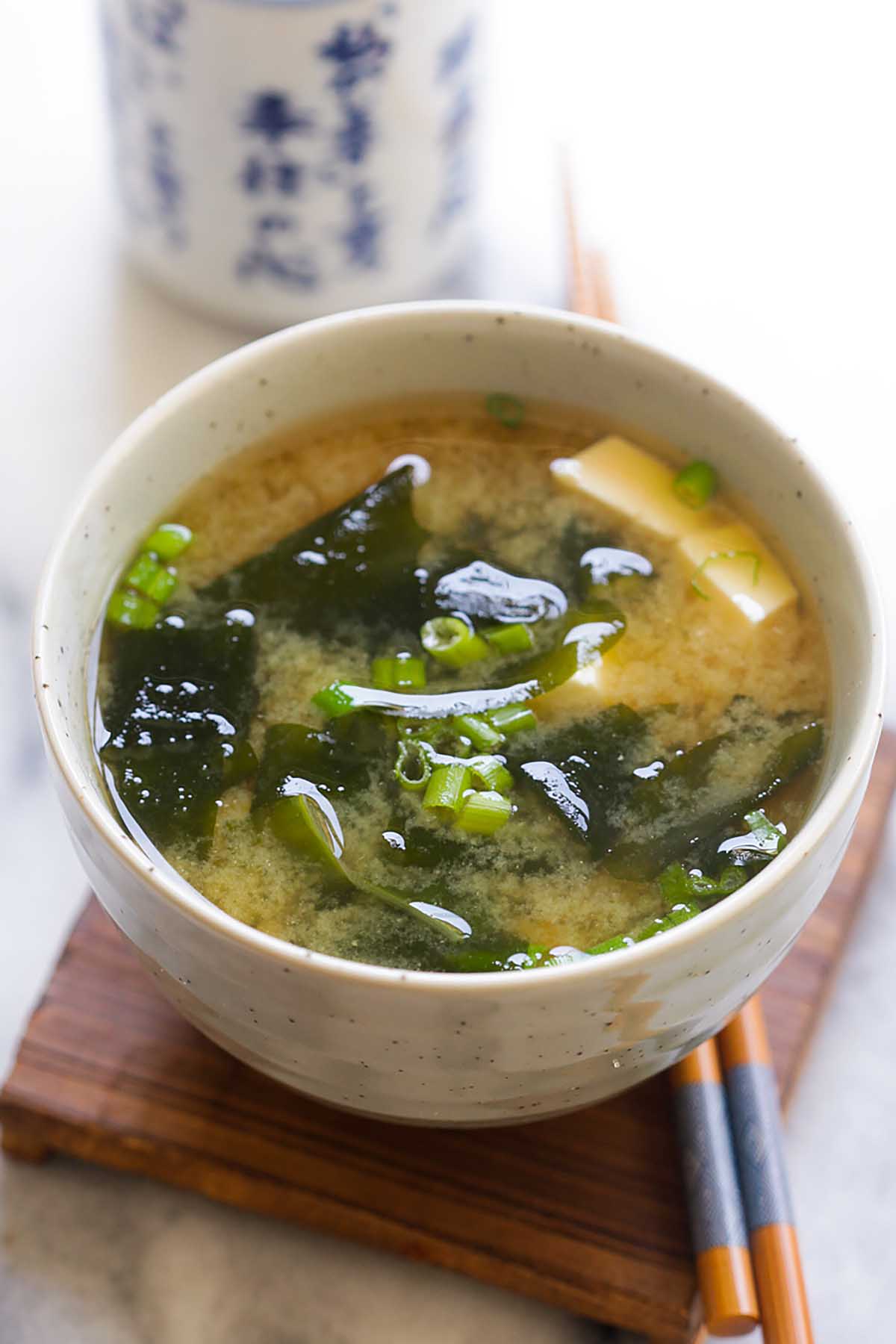
Miso soup ingredients consist of the following:
- Dashi broth or the soup base. Dashi is made with dried kelp (kombu) and bonita flakes (dried fish flakes); its is the building block of Japanese recipes.
- Tofu
- Fried tofu puffs
- Seaweed
- Chopped scallions
See the recipe card for full information on ingredients.
How To Make Miso Soup

The method is very easy. First, Make the dashi soup base by boiling the kombu and bonito flakes. Strain well. Bring the dashi to boil, then add the seaweed and tofu and cook for 3 minutes.
Turn off the heat and stir in the miso paste until dissolved. DO NOT boil the miso paste.
Top the soup with the chopped scallions and and serve immediately. Japanese Miso soup is good for your health and low in calories.
Frequently Asked Questions
This recipe is only 131 calories per serving.
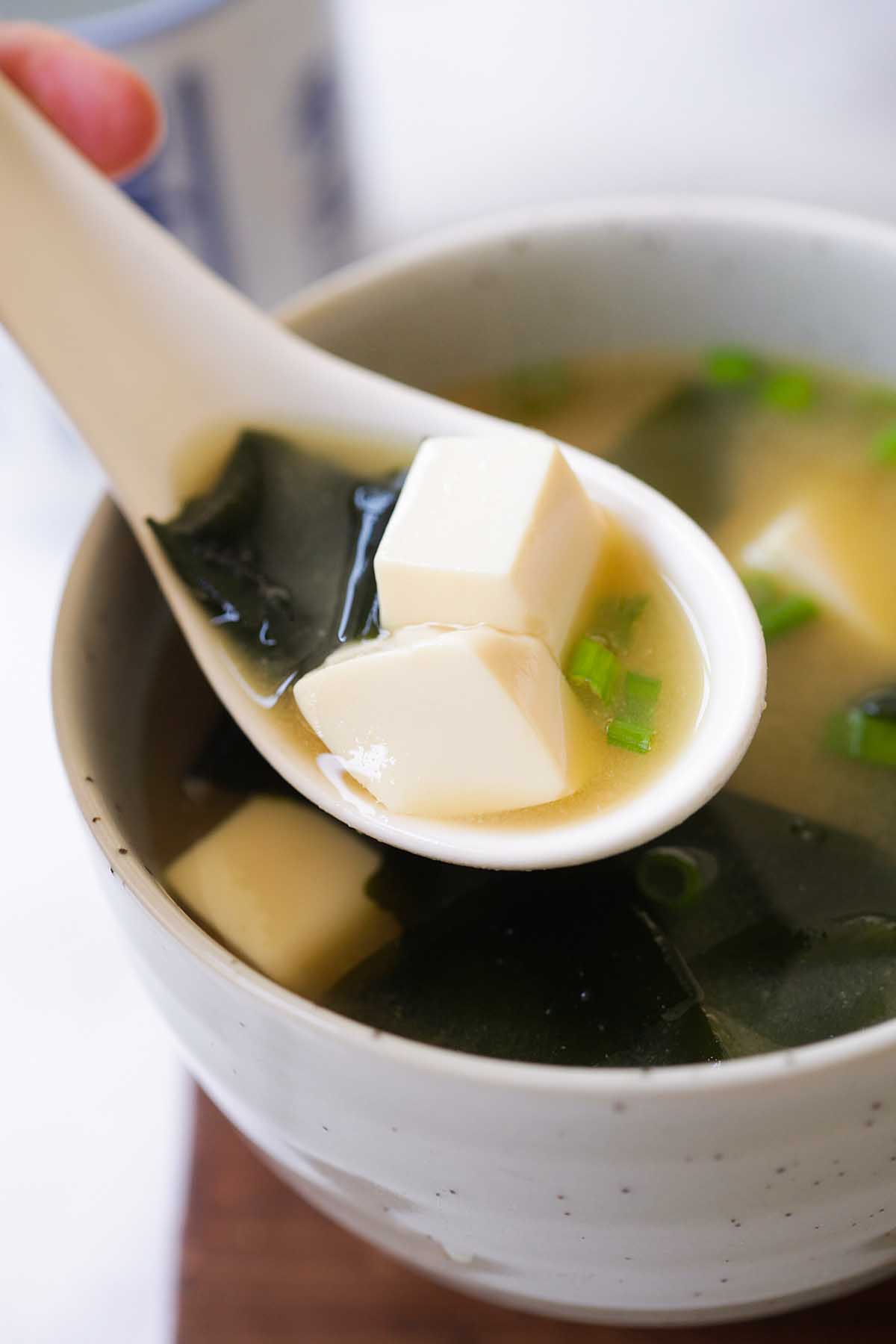
What To Serve With Miso Soup
This meal is best served with steamed rice. For a wholesome Japanese meal and easy weeknight dinner, I recommend the following recipes.
I hope you enjoy this post as much as I do. If you try my recipe, please leave a comment and consider giving it a 5-star rating. For more easy and delicious recipes, explore my Recipe Index, and stay updated by subscribing to my newsletter and following me on Facebook, Pinterest, and Instagram for new updates.
Other Recipes You Might Like

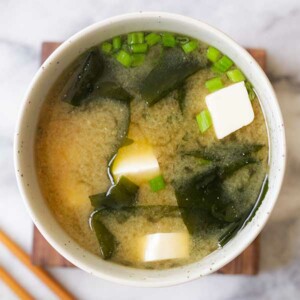
Miso Soup
Ingredients
- 4 cups water
- 6 inch (15cm) Japanese kombu , or dried kelp, rinsed
- 1 oz (30g) bonito flakes, dried, shaved
- 1 oz (30g) dried seaweed, soaked in warm water and drained
- 4 oz (120g) silken tofu, cut into small pieces
- 2 1/2 – 3 tablespoons white miso paste
- 1 tablespoon scallion, chopped
Instructions
- Bring the water and kombu to a boil in a stock pot over medium heat. Remove the kombu and add the bonito flakes, then simmer on low heat for 5 minutes. Use a ladle to remove any foam and scum from the surface.
- Strain the dashi through a fine sieve without squeezing or pressing the bonito flakes. Discard the bonito flakes. Bring the dashi to a boil, then add the seaweed and tofu, cooking for 3 minutes.
- Turn off the heat and add the miso paste to the soup. Stir with a pair of chopsticks until the miso paste is completely dissolved. Top with scallions and serve immediately.
Video
Nutrition
Nutrition information is automatically calculated, so should only be used as an approximation.


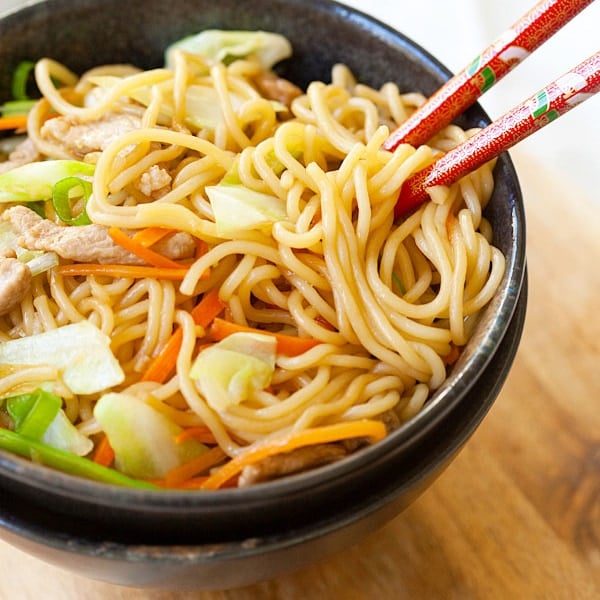
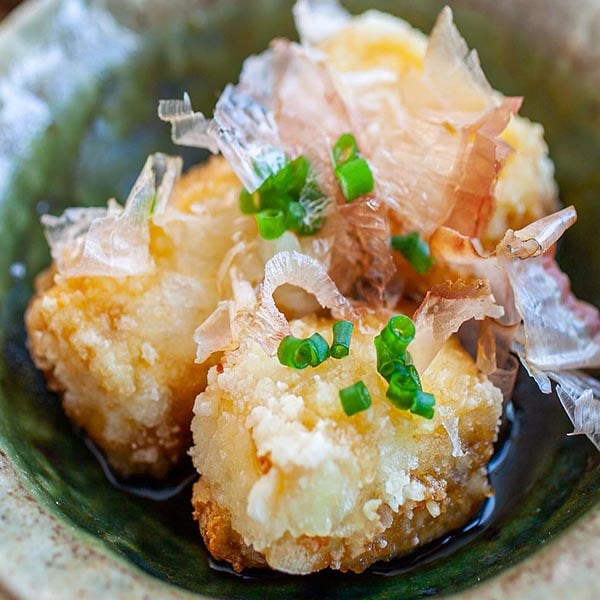






This was easy to make. Even though I had hard time finding dried kelp, I still made it and turned out really delicious.
I just made this and it was really good, but the recipe could use some adjustments IMO as it is impossible to weigh the bonito flakes and seaweed. Maybe the flakes could be measured in Cups and the seaweed and Kombu maybe state 1 – 6×6 sheet of Kombu state as well as seaweed like maybe 7 small sheets (2”x3”) to help as there are so many variations of how these products come and to avoid messing with the taste if we have to improvise if we can’t figure it out, but the taste was very good and easy to make.